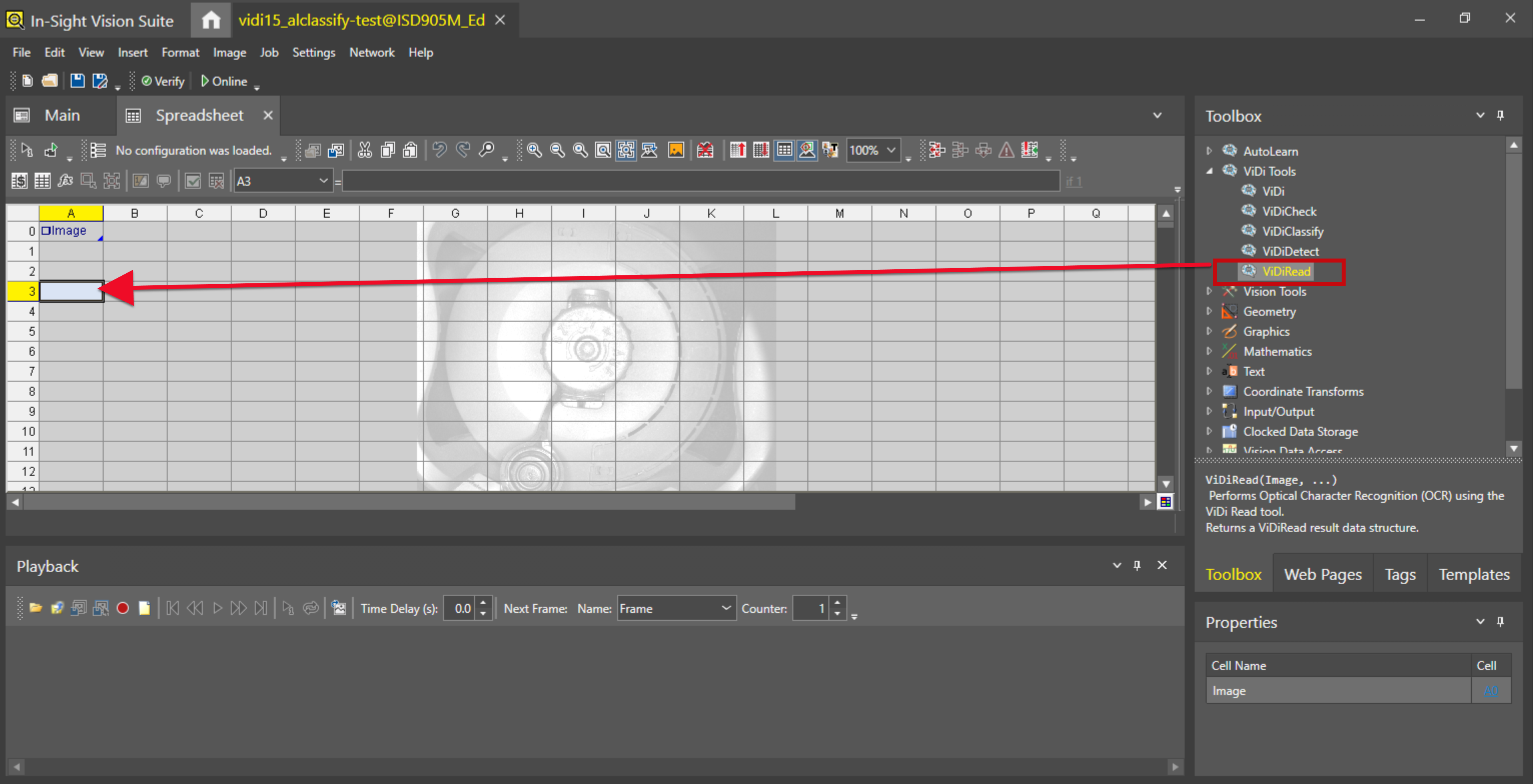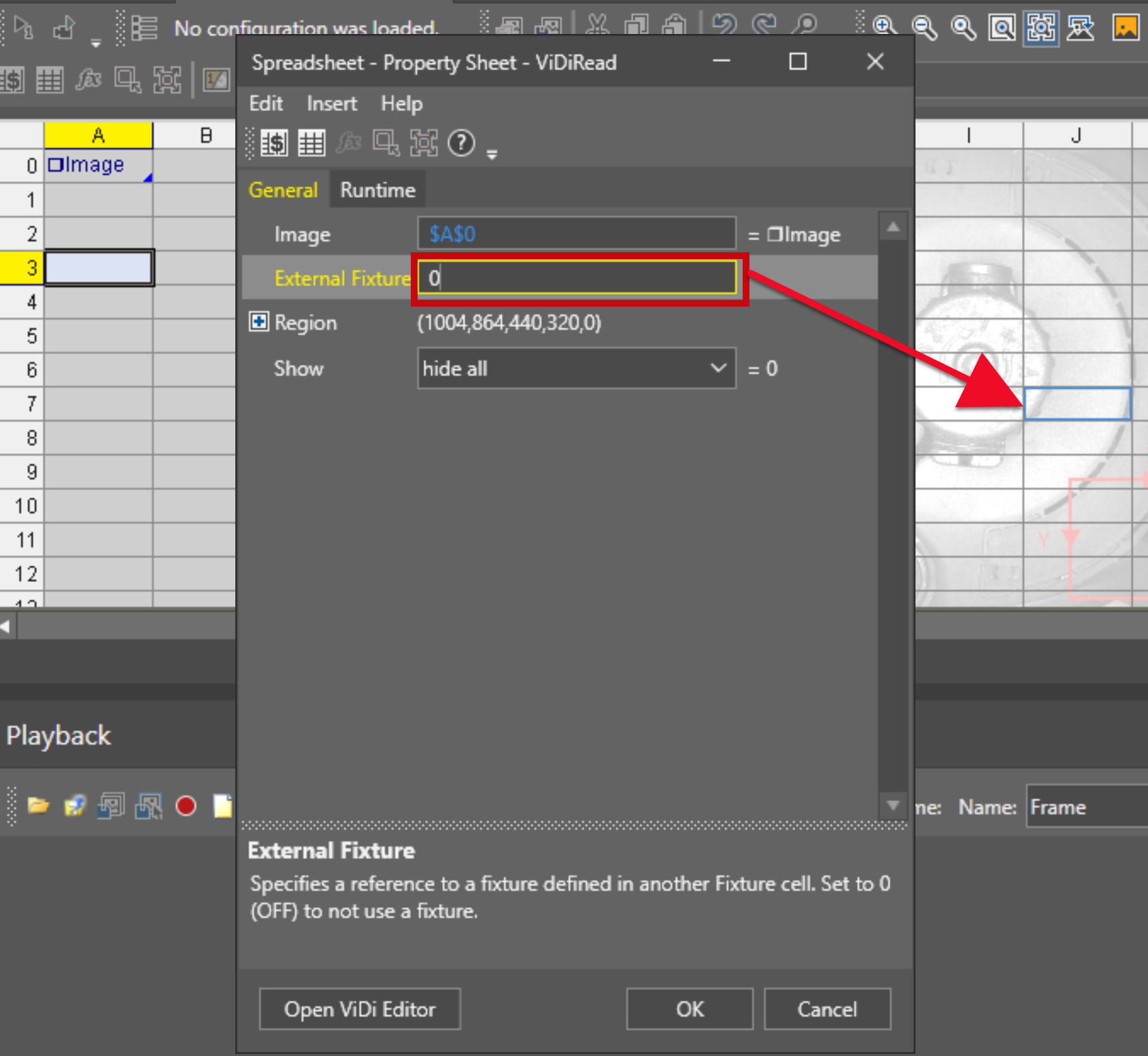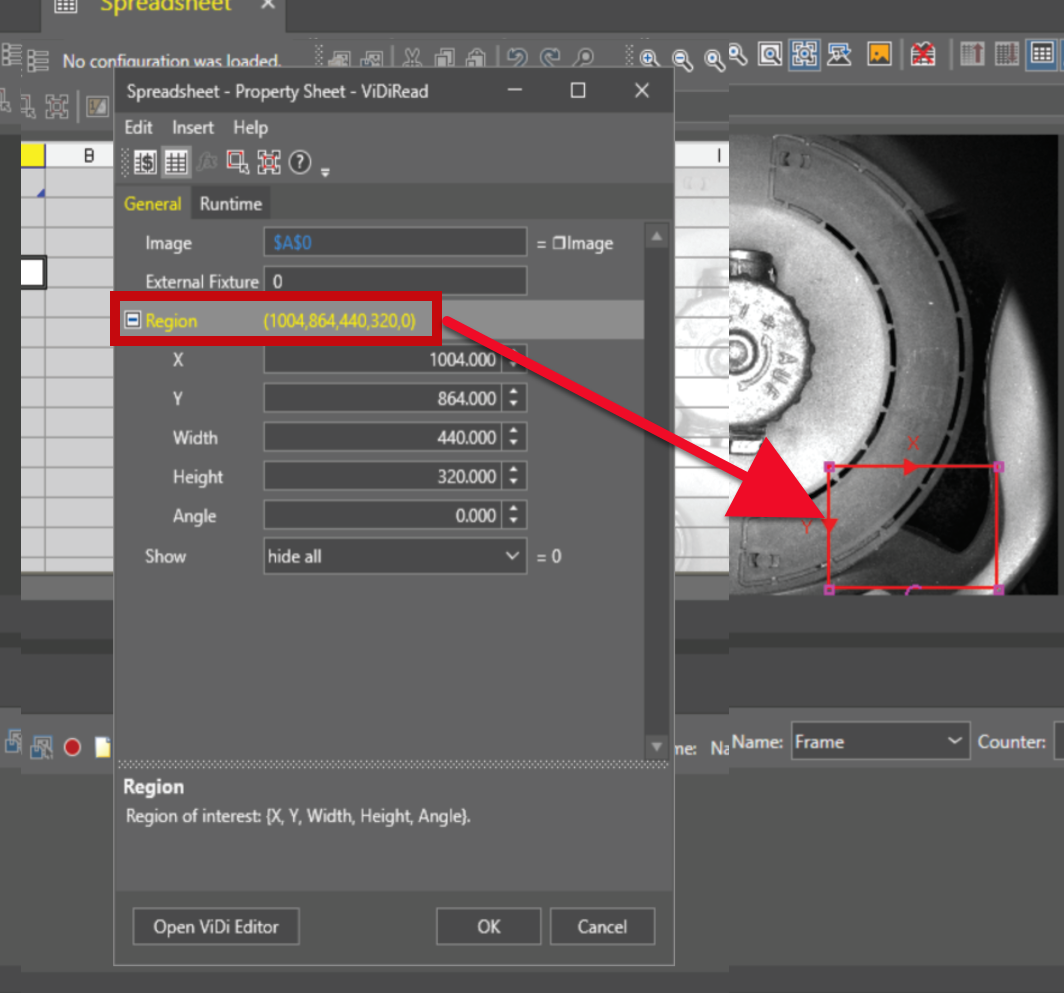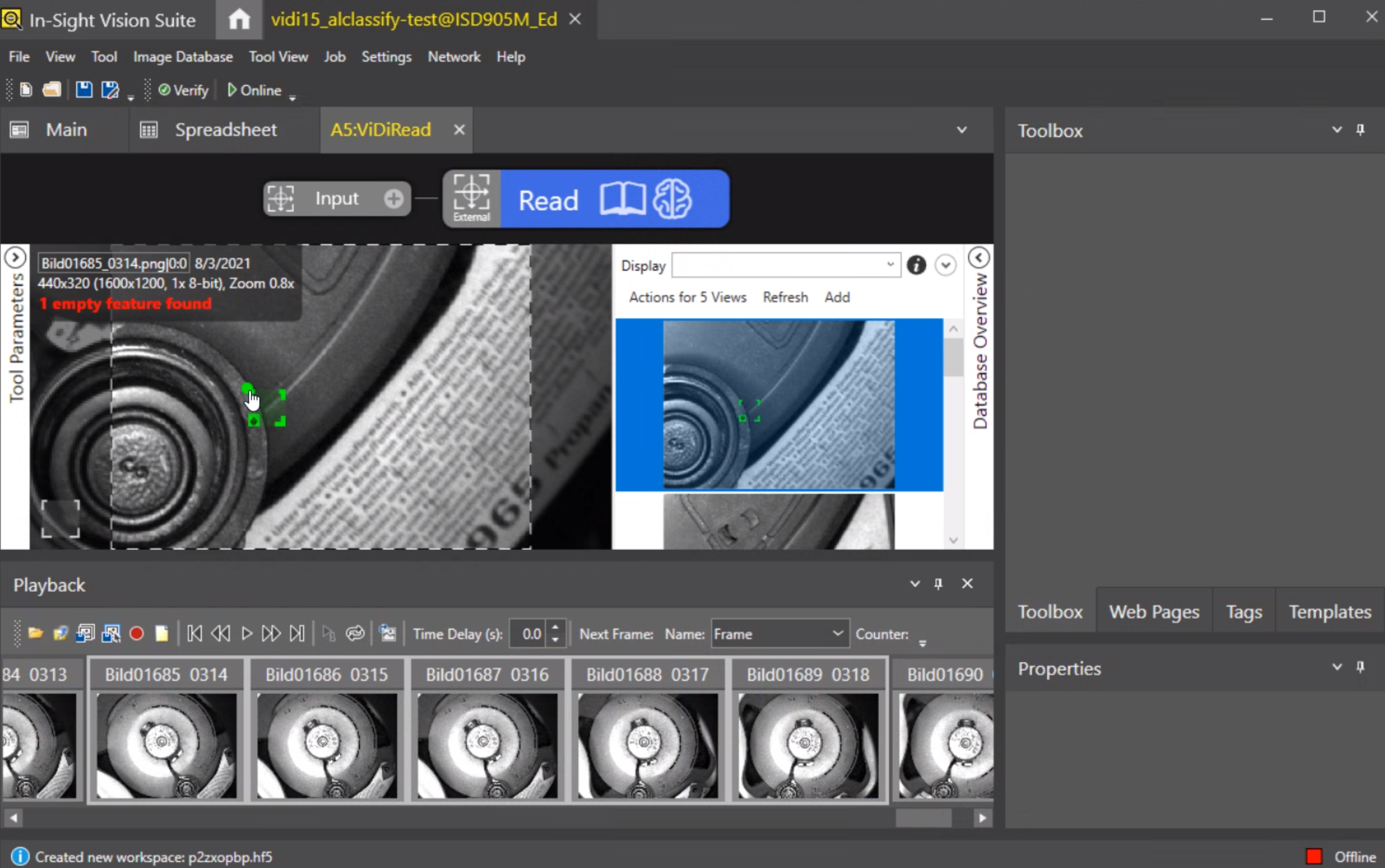ViDiRead
The ViDiRead function allows you to create a deep learning-based OCR solution around the Blue Read Tool. The ViDiRead function utilizes a pre-trained Blue Read tool, which allows the tool to read a large majority of fonts without needing to be trained. The characters of the pre-trained tool are numerals (0-9), uppercase letters (A-Z, except "O"), hyphen (-), plus sign (+), ampersand (&), colon (:), and forward slash (/).
To use the tool, position the function's Region over the text to read. In most instances, the tool will be able to read the characters in the image.
If one or more of the characters are not being read, you can press the ViDi Editor button to launch the ViDi Editor, where you can make additional adjustments to the tool, and train the tool, if necessary.
- In the event you need to train the tool, refer to the How to Train the ViDiRead Function topic for more information how to train the tool.
- In addition to the ViDiRead tool utilizing a pre-trained Blue Read tool, the tool also utilizes a default String model. The String model uses a default Minimum Length setting of 4 (meaning the minimum length of the string to be read is four characters). For more information about models, refer to the Blue Read Tool – Models topics.
- For more information about the ViDi Read tool within the ViDi Editor, see the Blue Read Tool and Using the Blue Read Tool topics.
To use the ViDiRead function:
- Select the ViDiRead tool from the ViDi Tools dropdown in the Toolbox.
-
Drag and drop the ViDiRead tool to the desired cell of the Spreadsheet.

-
Set External Fixture in the Property Sheet that automatically opens:
- Set to 0 if you do not want to use an external fixture.
- Specify a fixture defined in another cell by clicking in the External Fixture text box, and then clicking on the cell in Spreadsheet, or by manually entering the cell reference.

-
Set Region in the Property Sheet:
- Define the X and Y offset from the Fixture origin and the region width and height in pixels, and the rotation of the region compared to the Fixture X axis in degrees.
- Alternatively, double-click on Region and visually edit the region of interest.

- Click Open ViDi Editor in the Property Sheet to configure the ViDiRead tool.
-
Add the images that you want to include in your training set by dragging and dropping from the filmstrip. The bigger the training set, the more reliable the results.

-
Label the features that you expect to make up your model.
-
Click on an area of interest to create a feature box for the label.
-
Center the feature box on the feature you want to label, and rotate or rescale the feature box using the green dot in the top left corner of the feature box. You can also adjust the Feature Size parameter using the interactive white adjustment box in the bottom left corner of the image display.

-
Place the box on the image feature that you want to train ViDi to look for.
-
Repeat for each image feature and every image in the training set.
-
-
Click the blue Brain icon at the top to train the tool.
-
Review your training images and verify that the results are correct.
ViDiRead Inputs
General Tab
| Parameter | Description | ||||||||||
|---|---|---|---|---|---|---|---|---|---|---|---|
|
Image |
This argument must reference a spreadsheet cell that contains a valid Image data structure. By default, the cell referenced is $A$0, which contains the image data structure returned by AcquireImage. | ||||||||||
|
External Fixture |
Specifies a reference to a Fixture or Fixtures data structure. This fixture data is passed into the ViDi tools, and is used to define the views for each image. When using an external fixture, within the Region of Interest (ROI), select External. Then, from the Image Database menu, select Update All Training Fixtures, and modify the ROI of the ViDi tool. You can also update the ViDi tool reference to the external fixture data by right-clicking the ViDi data structure and selecting Update Training Fixtures. |
||||||||||
|
Region |
Also known as the Region of Interest (ROI), specifies the region of the image that undergoes analysis. Double-click on the Region parameter to create an Interactive Graphics Mode that you can transform and rotate. Select this parameter and press the Maximize Region button on the Job Edit toolbar of the property sheet to automatically stretch the region to cover the entire image.
|
||||||||||
|
Show |
Specifies the display mode for ViDiRead tool's graphical overlays on top of the image.
|
Runtime Tab
Allows access to ViDi Processing Tool Parameters that can be modified while the job is online. These parameters do not require that the tool be retrained. You can drag and drop these parameter to the spreadsheet, and publish them to the HMI for operator interaction.
ViDiRead Outputs
|
Returns |
A ViDiRead data structure, or #ERR if any of the input parameters are invalid. |
||||||||||||||||||||||
|
Results |
After a ViDiRead function is inserted into the spreadsheet, a results table can be created, based on the ViDi Results Vision Data Access Functions by right-clicking on the function's data structure and selecting Insert Getters.
|